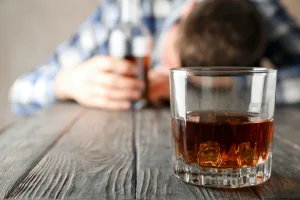Drink-driving
Another important stakeholder is the department of transportation, which typically has responsibility for implementing drink–driving laws and other policies to improve road safety and health, and which often has expertise in communication to promote behaviour change. The enforcement of drink-driving laws must be accompanied by strong public awareness campaigns, using mass media and other strategic communications, on the risks of drink-driving and the presence of enforcement activities. Federal Aviation Regulation 91.17 (14 CFR 91.17) prohibits pilots from flying aircraft with an alcohol level of 0.04% or more, or within eight hours of consuming alcohol (“eight hours, bottle to throttle”), or while under the impairing influence of any drug. The same prohibition applies to any other crew members on duty aboard the aircraft (flight attendants, etc.).
Reducing the legal blood alcohol concentration limit
According to data from the NHTSA, drunk driving statistics vary significantly based on age, gender and location. Young people, motorcyclists and drivers with prior DUI convictions are the most likely to drive under the influence. Effective enforcement of drink–driving laws requires a significant amount of police time for conducting and processing random breath-testing activities and sobriety checkpoints, and resources are required in the judicial system to process cases. It is important that the police and judicial system have adequate resources for effective enforcement.
Refusing a roadside or evidential test is an offense, and is subject to the same penalty as high range drunk driving. In Australia it is an offence for any learner or probationary driver to drive with a BAC above 0.00%. In addition, anyone instructing or supervising a learner driver must have a BAC of under 0.05%. For the most part, DUI or DWI are synonymous terms that represent the criminal offense of operating (or in some jurisdictions merely being in physical control of) a motor vehicle while being under the influence of alcohol or drugs or a combination of both.
This feeling of perceived recovery is a plausible explanation of why so many people feel that they are able to safely operate a motor vehicle when they are not yet fully recovered from the alcohol they have consumed, indicating that the recovery rates do not coincide. In 2022, there were 2,337 people killed in alcohol-related crashes where a driver had a BAC of .01 to .07 g/dL. The offers that appear on this site are from companies that compensate us. This compensation may impact how and where products appear on this site, including, for example, the order in which they may appear within the listing categories, except where prohibited by law for our mortgage, home equity and other home lending products. But this compensation does not influence the information we publish, or the reviews marriage changes after sobriety that you see on this site. We do not include the universe of companies or financial offers that may be available to you.
As shown in the next chart, the rate of alcohol-impaired-driving fatalities, based on VMT, has declined noticeably over the last 3 decades. However, the percentages of fatalities in the United States that involve alcohol-impaired driving has decreased only slightly during this time. If the officer observes enough to have a reasonable suspicion to legally justify a further detention and investigation, they will ask the driver to step out of the vehicle, and request that the driver submit to voluntary field sobriety tests.
Reducing alcohol consumption
Kelly Anne has over six years of experience with reporting and editing in the personal finance space. Her work has been featured in national publications including Reader’s Digest, CNBC and Forbes. She has a background in business education and a master’s degree in international communication studies. Persons who serve alcoholic beverages are also stakeholders to the extent that they should be responsible for not serving excess alcohol to drivers. Legislation should stipulate upper BAC limits for drivers at a maximum of ≤ 0.05 g/dL or lower for the general population, and at 0.02 g/dL or lower for novice and commercial drivers.
However, fatalities increased 36% from 2011 to 2021, due in part to a noticeable rise in alcohol-impaired-driving fatalities during 2020 and 2021 and the COVID-19 pandemic. Mass media campaigns and police enforcement should not be limited to specific holidays since drink-driving behaviour occurs throughout the year. However, during holiday periods the frequency of enforcement and the visibility of media campaigns can be alcohol dry eyes increased.
Some states sought to impose criminal punishment for a refusal to submit to a chemical test of their breath or blood; however, in Birchfield v. North Dakota, the United States Supreme Court visited the issue of whether states can criminalize a refusal to submit to a chemical test. The United States Supreme Court decided that states may criminalize a refusal to submit to a breath test; but not a refusal to submit to a blood test absent a McNeely warrant, named after fun substance abuse group activities for adults Missouri v. McNeely (2013). It is an administrative form that attests to an insurance company’s coverage, or the posting of a personal public bond in the amount of the state’s minimum liability coverage for the licensed driver or vehicle registration.
Drunk Driving And Addiction Treatment
Inpatient and outpatient treatment programs are available across the country. Young people between the ages of 21 to 25 years old are the most likely to drive drunk. Impaired driving continues to be a serious safety and public health issue worldwide.
- According to the National Highway Traffic Safety Administration (NHTSA), approximately 11,654 Americans were killed in alcohol-impaired driving crashes in 2020; deaths like these were 30% of all total motor vehicle traffic fatalities in the US.
- In 2021 there were 13,384 people killed in crashes involving alcohol-impaired drivers (defined as drivers or motorcycle riders with BACs of .08 g/dL or higher).
- Mass media campaigns and police enforcement should not be limited to specific holidays since drink-driving behaviour occurs throughout the year.
- He has covered insurance for a decade, including auto, home, life and health.
- In California it is a refutable presumption that a person with a BAC of 0.08% or higher is driving under the influence.
That emotional burden can be worse than any bodily harm; however, the physical perils of drunk driving are immense too. Impaired driving can cause accidents that lead to paralysis, disfigurement, brain damage, and death. Enforcing the legal limit for alcohol consumption is the usual method to reduce drunk driving. The participants believed that they were recovering from the adverse effects of alcohol much more quickly than they actually were.
Effects on cognitive processes
This typically involves either observing a traffic violation or observing behavior, such as weaving or lane departure, that would raise a “reasonable suspicion” of driving while impaired. The police must have an articulable reason for the stop, but does not need probable cause for an arrest. Every day, about 32 people in the United States die in drunk-driving crashes — that’s one person every 45 minutes. Repeat offenders comprise almost one-third of all convicted drunk drivers. The United States has extensive case law and law enforcement programs related to drunk driving.
The 45-to-49 age group had the highest percent, 37%, of drunk motorcycle riders killed in 2022. Roadblocks do not involve reasonable suspicion, but must meet particular legal standards to avoid arbitrariness while still assuring randomness. Impaired driving is a leading cause of all traffic-related deaths in the United States.
Even if you can avoid physical injury to your person or another driver, a conviction for driving under the influence will have a significant impact on the cost of your car insurance. When you have a DUI or DWI on your record, car insurance companies generally assess you as a high-risk driver and increase your premiums to cover that increased risk. What would happen if you drove under the influence and killed a passenger in your car, or another driver?






